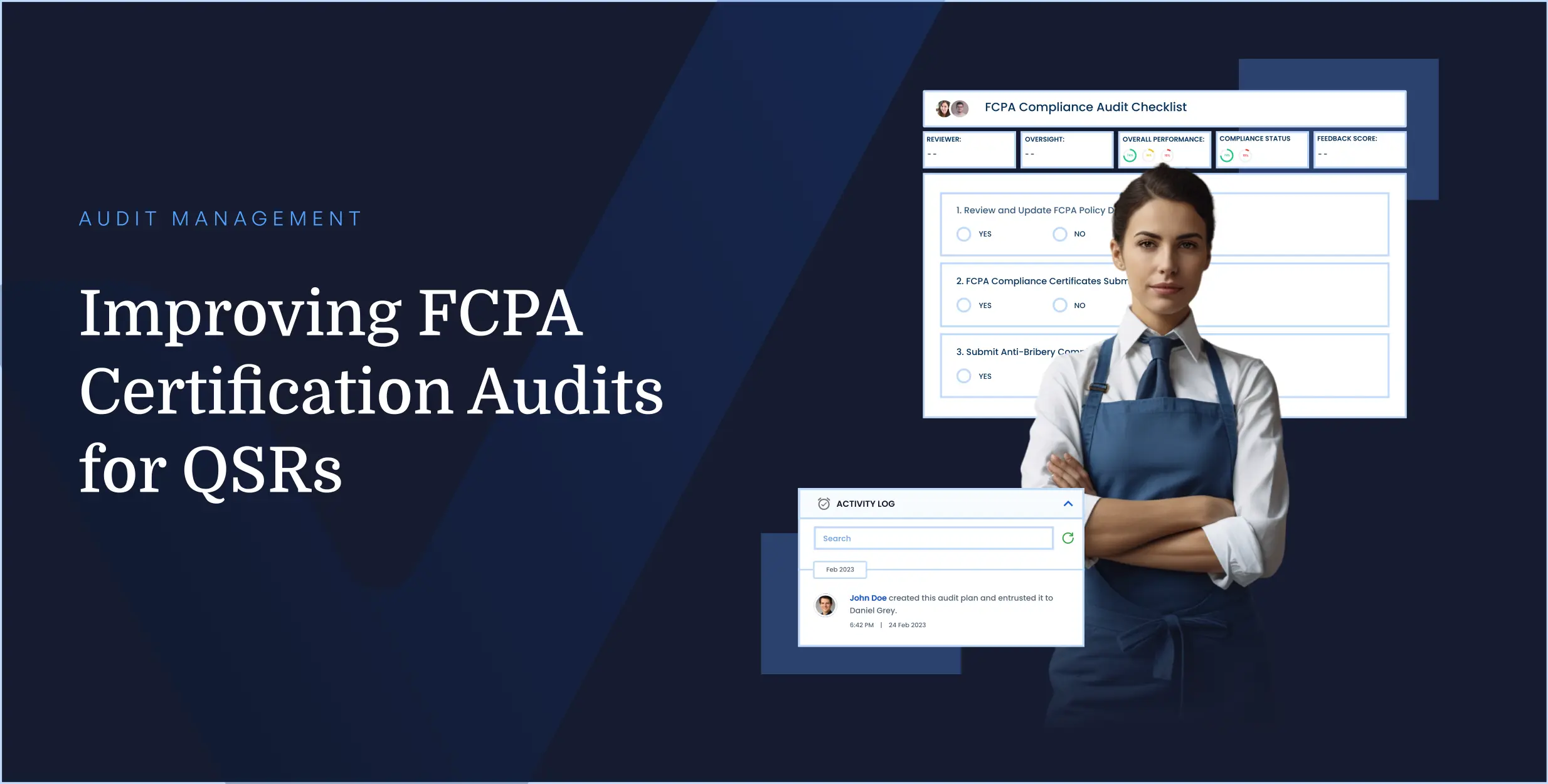Improving FCPA Certification Audits for QSRs
U.S.-based Quick Service Restaurants (QSRs) with a global presence are obligated to remain compliant with the Foreign Corrupt Practices Act (FCPA). It is crucial to implement best practices across all branches and franchises. 
FCPA audits are a significant aspect of the responsibilities that QSR internal audit teams are expected to handle. The process not only involves identifying requirements to be satisfied and completing tasks to meet them, but it also requires establishing communication channels for collaboration, assigning and managing responsibilities within the team, managing evidence, identifying risks, implementing response strategies, and many other tasks.
Challenges
All these processes come with their own set of challenges, and as an FCPA compliance auditor, you and your audit team must be facing the following challenges every time you conduct an audit.
- Sending hundreds of emails and making numerous phone calls to stakeholders spread across locations and franchises, resulting in decentralized communication.
- Sharing and collecting FCPA requirement checklists and other relevant evidence in physical format or through shared drives, requiring significant manual labor to organize during audits.
- Inability to trace whether stakeholders are completing FCPA compliance audit-related responsibilities on time before due dates.
Solution
If you and your audit team face the above issues, it is time to adopt a technology solution to simplify the FCPA audit process.
VComply AuditOps is designed explicitly for proactive audit professionals to help automate the process. The following are some highlighting features of the AuditOps platform to assist QSR audit professionals with FCPA compliance audits.
Steps to follow
Step 1: Bring all audit stakeholders on a single platform
The FCPA audit process begins with establishing connections across all stakeholders and initiating communication. Conducting this through emails and phone calls is time-consuming and decentralizes communication.
With VComply, you can bring your team and other stakeholders onto a central platform to communicate and collaborate to manage audit activities.
VComply enables you to onboard people on the platform using their email IDs. Once onboarded, you can create specific workgroups to assign audit tasks.
Additionally, you can create location and franchise-specific audit responsibility centers, eliminating the need to visit locations physically and saving you and your team hours of travel time.
Step 2: Define FCPA compliance requirements through checklists.
Gone are the days when you had to manually create FCPA requirement frameworks and compliance checklists from scratch, communicate through physical meetings, and keep everything on physical paper.
You can create the FCPA requirement framework by extracting controls from the integrated framework library. Additionally, you can generate the requirement checklist and assign it to the concerned person to keep track of compliance.
Step 3: Centralize audit plans, tasks, and evidence
FCPA requires QSRs to collect and manage evidence and documents related to anti-bribery policies, anti-bribery compliance certificates, anti-bribery risk assessment documents, and many others. Managing certificates and evidence documents on such a large scale requires sound audit planning, a variety of audit tasks, and the centralization of collected evidence.
The traditional way of conducting meetings to define and communicate audit plans, followed by sharing tasks through spreadsheets and collecting evidence through shared drives, is time-consuming, inconsistent, and prone to the loss of information.
With AuditOps, all these activities can be done remotely in a central space called the Audit module. Here, you can create audit plans, define related tasks, and assign them to stakeholders with just a few clicks.
Once an audit plan and tasks are defined, an Audit Workroom is created where all stakeholders can register their completed tasks and upload audit documents and FCPA certificates.
Step 4: Automate alerts and notifications
FCPA audits are typically conducted annually, and there is a high likelihood that the concerned stakeholders responsible for these activities may forget about the timeline and due dates. As the audit leader, it is crucial to ensure that all stakeholders stay updated with proper timelines, due dates, and audit process requirements to maintain a consistent workflow.
When you create audit plans and tasks in AuditOps, automated alerts and notifications are sent to the responsible individuals, and this continues until the task has been completed. This feature helps keep everyone aware of deadlines and ensures the timely completion of tasks throughout the audit process.
Step 5: Stay connected and updated on actions
When the audit activities and evidence collection process are ongoing, sending messages or sharing comments on the submitted tasks and evidence is often necessary. Conducting review meetings or making multiple calls can be extremely tiring and time-consuming.
In the VComply Audit Workroom, you can share your review comments and notes through the comment section, facilitating centralized real-time communication and stakeholder collaboration.